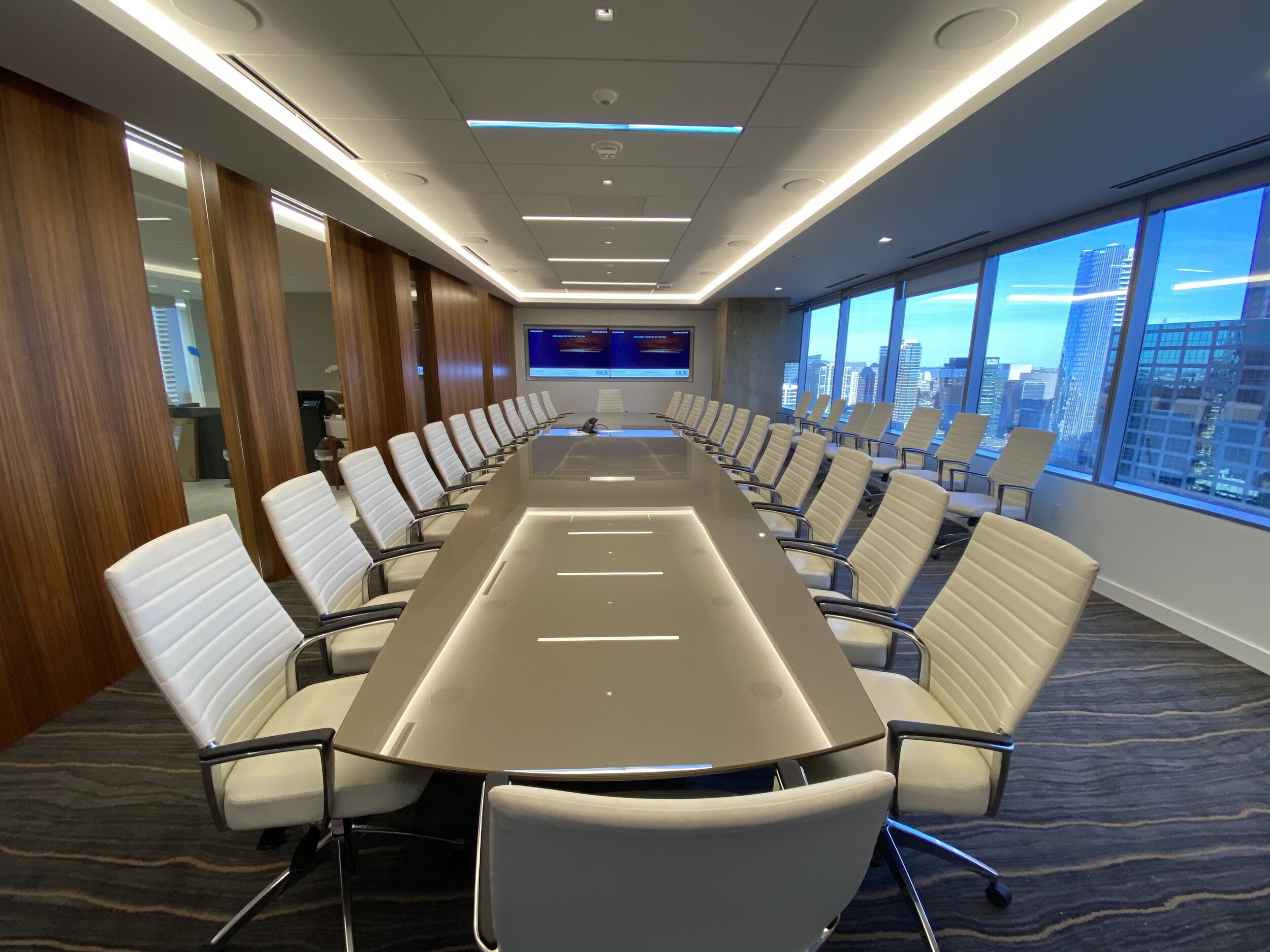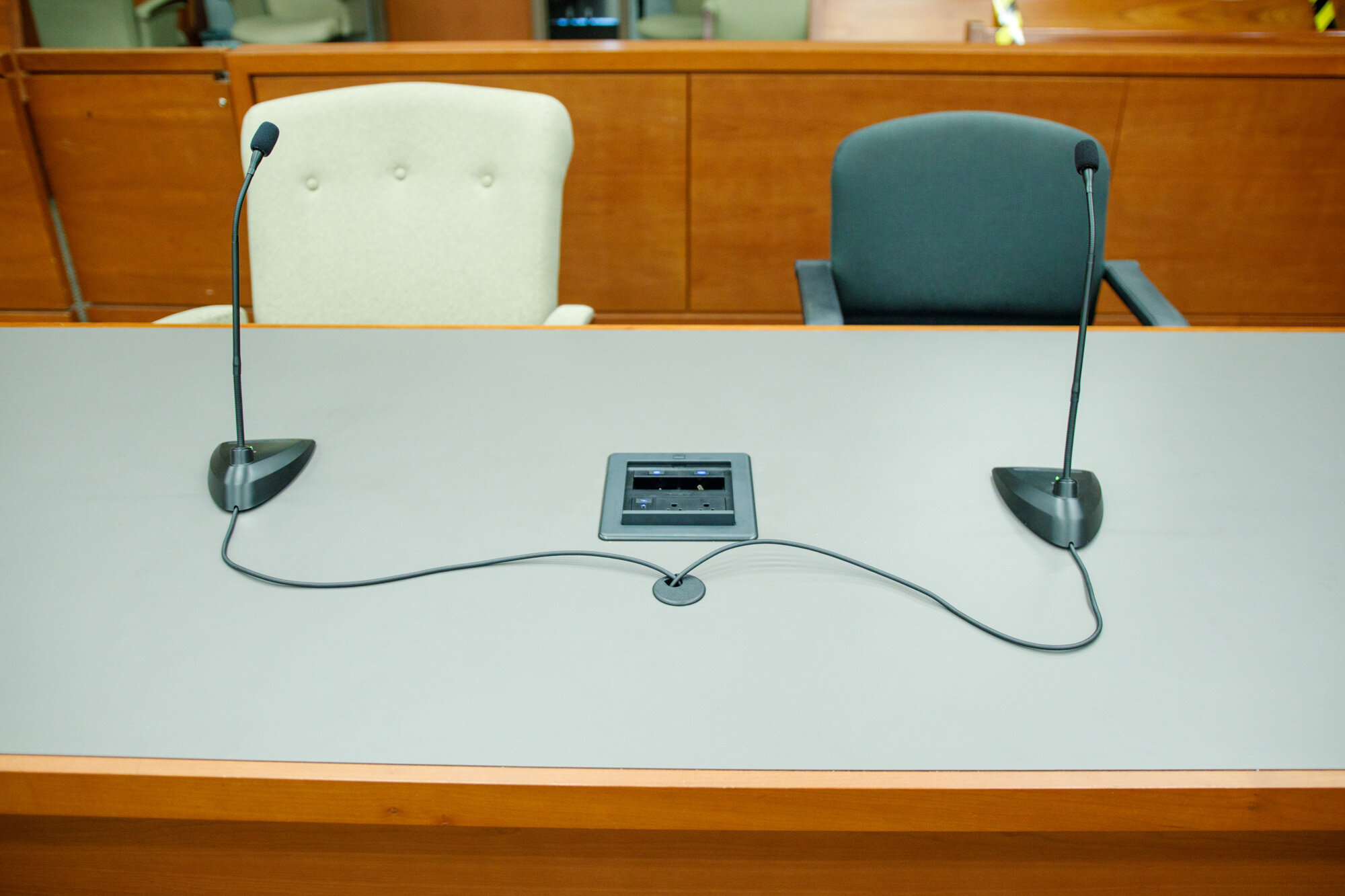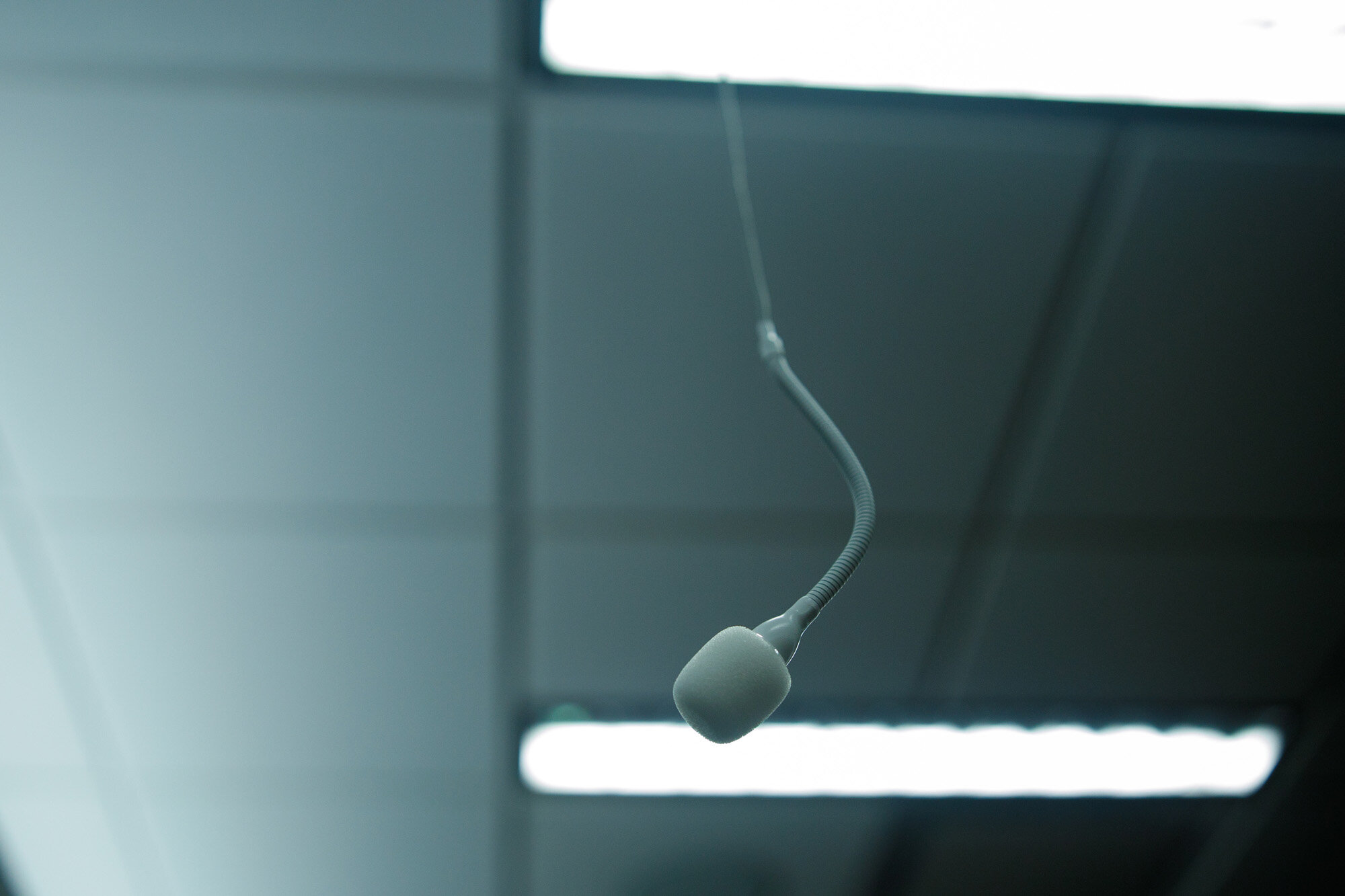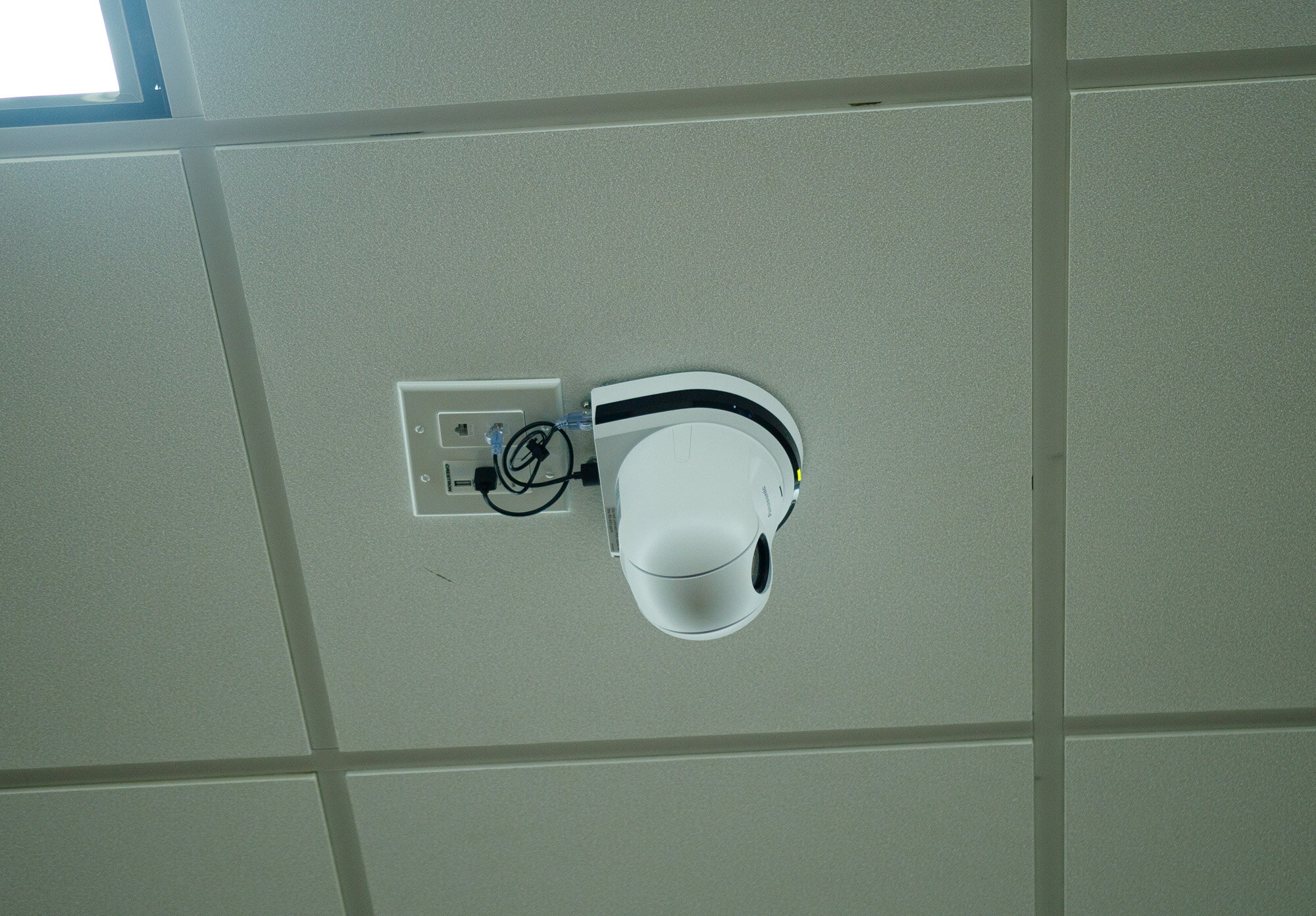Clark: Experience And Expertise
“Clark was selected by our design-build contractor, Visioneering Studios, of Costa Mesa, California, and they were an excellent choice,” proclaims Jim Penner, Executive Director of the Legacy International Center. “Clark was chosen to put the audio and projection systems into the 4D Theater, and putting a sound system into a domed environment like that is always a challenge. The remarkable thing about that was that we did not use an acoustical consultant for the theater’s sound. We relied on Clark’s experience in putting sound into a space like that, and the result is an amazing-sounding experience for everyone in that theater. The challenge with the projection system was to fill the entire dome with images, and Clark designed a system utilizing four individual Christie projectors to accomplish the task. It turned out fantastic.”
Clark also installed the theatrical lighting systems in the Legacy Pavilion theater, including the main truss over the seating area and three light bars above the stage, as well as the programming for the MA Lighting International grandMA3 lighting console. But they didn’t stop there. When it came time for a challenging ceiling install of a Christie CP2220 Digital Cinema projector and a Christie DHD1075-GS DLP laser projector in this venue, the Legacy International Center asked Clark’s technicians for advice and they ended up doing the actual installation of the projectors, as well. “Clark’s technicians were totally professional, ready to take on any challenge that came up and able to solve them,” recalls Michael Harris, Chief Engineer at the Legacy International Center. The two Christie projectors were installed for two specific missions: one for the auditorium’s main cinema screen and the second for a smaller drop-down lecture screen.
A Dynamic Experience
Kraftwerk Living Technologies, of Wels, Austria, was retained to create the complex control system for the seven-tiered, domed theater’s dynamic motion seats. These can rock side to side and back and forth and are able to simulate wind blasts, the scent of salt air, and the sensation of mist in the face. For instance, when Moses parts the sea in one of the theater’s initial features, “Walk Through the Bible,” theatergoers will smell the salt air, see and feel the mist, and their seats will rumble as the waves part. The 4K theater also has a QSC Cinema surround-sound system managed using a QSC Core 110f processor. Visitors are immersed in a 7.1 soundfield, which features some amazing low end: five dual-18-inch subwoofers buttressed by a pair of 21-inch subs.
However, the Covid-19 pandemic hit just before the final programming of the system was scheduled to be undertaken. “No one was able to fly out for that, so Clark’s technicians took on that role, essentially acting as the eyes and ears on site for Kraftwerk’s own engineers remotely, doing any troubleshooting that was needed,” explains Penner. “Clark’s attitude throughout the project was always, ‘What do you need? We can do it.’ If a solution had a budget concern, they found ways to resolve that, too. It’s very hard to find technical contractors of that level of quality and that are willing to always do whatever it takes.”
Precision Installation Reduces Costs
“The combination of the 4K Christie projectors, a QSC sound system in a Dolby Atmos immersive speaker configuration, and those amazing Kraftwerk seats that can move in several different ways and incorporate features like pneumatics and leg ticklers make the 4D Theater a very unique project,” observes Alex Stave, a design consultant at Clark who worked on the projection systems in both theaters at the Legacy International Center. He says the main challenge in that theater was positioning the projectors precisely, in order to illuminate the domed projection area. That involved close consulting with Christie technicians to carefully study and map the entire space, determining the best locations from the 3D model they constructed from the map, and then developing custom rigging to secure the projectors. Ultimately, two projectors were placed on two different parts of the floor aimed upward, and two more share a space in the upper part of the room, and as a result viewers’ field of vision is completely immersed beneath the dome. “We had to take a number of other things into consideration beyond just the positions and the aiming, such as how to keep the projectors cool during operation,” says Stave, who also worked on helping coordinate the Kraftwerk dynamic seating systems.
The four projectors create a visual synergy that goes beyond 4K, says Clark Design Engineer Jake Austel. “Each individual projector is 4K, but the density of pixels you get when you combine several of them like this produces very, very high resolution — pixel for pixel, it’s much higher that what would be considered 4K,” he says.
In fact, he adds, the early stages of the projection-system design called for six 4K projectors, but Clark’s team was able to achieve the desired high degrees of luminosity and coverage with four, producing a significant cost savings on the theater’s hardware budget.
Positioning the projectors is critical, and adroit use of software programming assured that the four projectors’ images seamlessly blend across a precise tangent line — the floor-mounted units cover the mid left and right quadrants of the dome from the audiences perspective and the other two illuminate the upper and lower center part from positions above and behind the seating. But getting something with this degree of resolution also requires an understanding of how the eye and the brain perceive what they see. “You look at the way light refracts across certain objects and you have to assess what it looks like versus the way people’s eye perceive it,” he explains. “For instance, even black regions in a projected image are still projecting light. While this is widely accepted when using overlapping projectors, the design needs to meet the restraints set by how the eye can perceive it, because the human eye is constantly white balancing.
“A lot of what goes into commissioning a multi-projector 4K installation like this is perceptual and sometimes even highly subjective, so it takes a lot of expertise and experience to get an installation like this right,” Austel adds. “Clark has the unique resources needed to make that happen.”






































